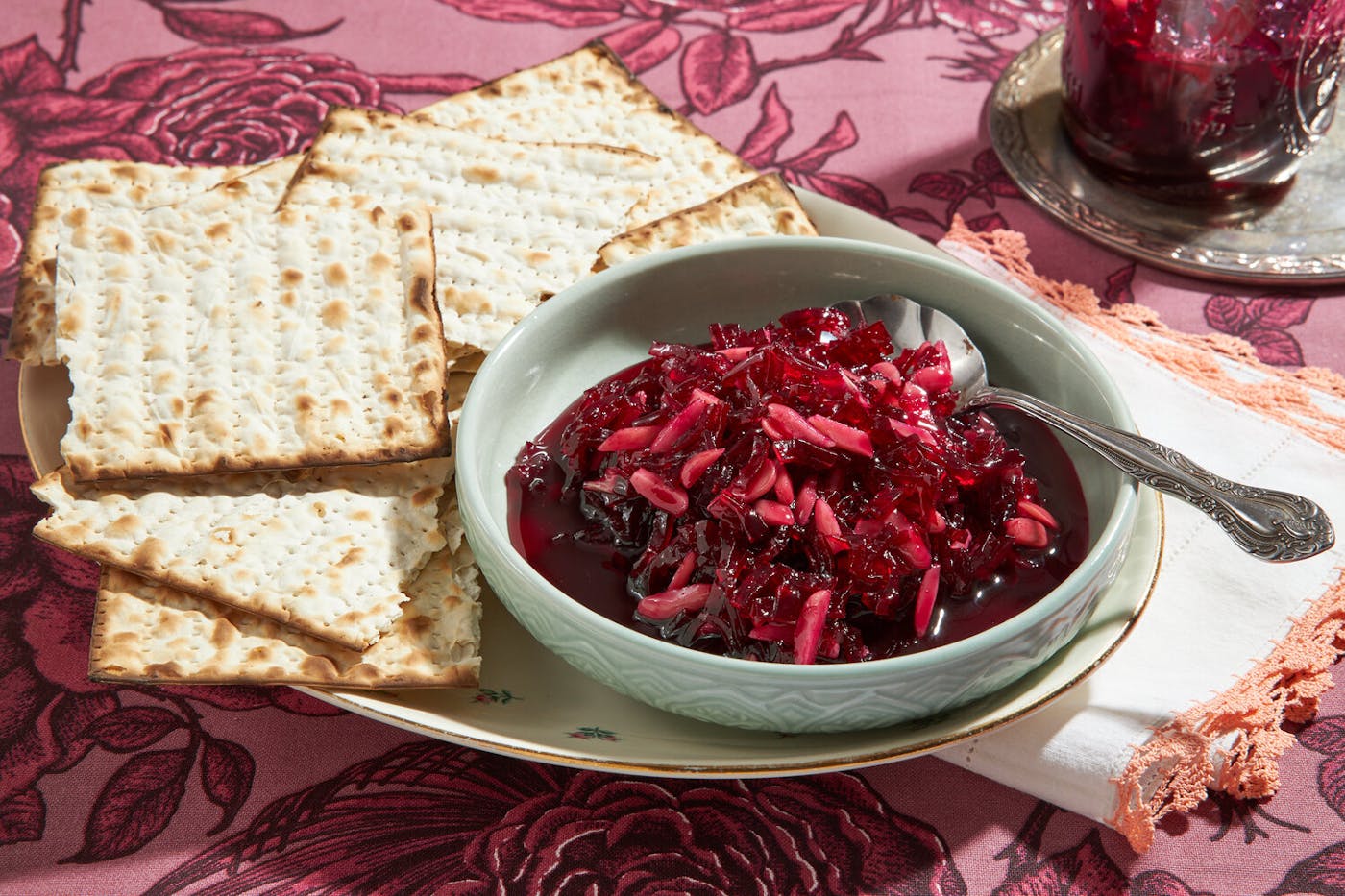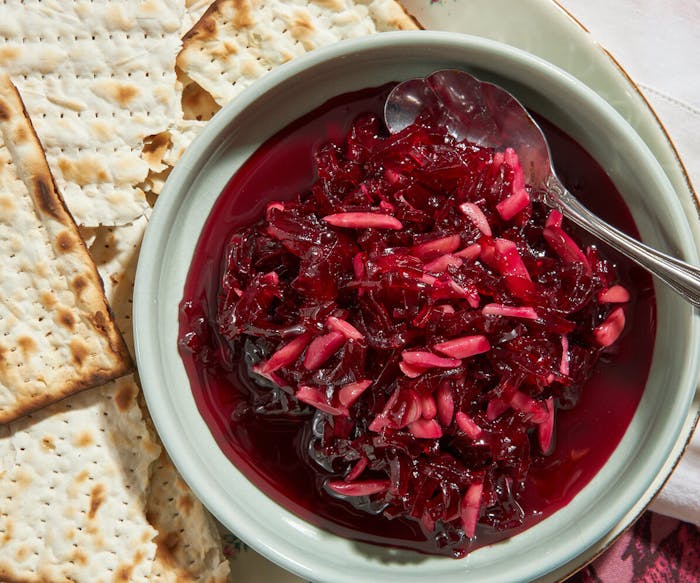In the late 1970s, while attending graduate school, a friend showed Jon Greenberg a copy of “The Rochester Hadassah Cookbook,” a community cookbook from his father’s hometown, which sits on Lake Ontario. Many of the recipes, which rely heavily on processed foods and a style of cooking that was popular in the 1950s, 1960s, and 1970s didn’t appeal to Jon, but still, he was intrigued and curious.
“I brought it home and showed it to my father,” Jon recalls. “I asked him: ‘Do you recognize any of the names?’” He did. He also recognized recipes from the community he grew up in, including one for eingemacht, a beet preserve that Jon’s great-grandmother Lena made for Passover. “He got excited and started telling me all about it,” says Jon.
At Passover, Lena would make the recipe and “bring it to the table in a bowl and my great-grandfather would taste it and say it needed a little more sugar, a little more ginger,” says Jon, retelling the story he learned from his father. Lena would doctor the recipe and the couple would go “back and forth until he was satisfied with it,” Jon says.
It’s a recipe that was nearly lost, not only in Jon’s family, but in many others. In northern and eastern Europe, fresh fruits, and vegetables were hard to find in winter. In the Encyclopedia of Jewish Food, Gil Marks explains: “For generations, in the days preceding Passover, eastern Ashkenazic housewives would chop or grate the roots—notably beets, black radishes, carrots, and turnips—and cook them with honey and a touch of vinegar (in America, lemon juice) into eingemachts.” They were also popular around Sukkot, made with leftover etrogs. But the recipe fell out of favor as commercially made kosher for Passover jams became available.
Before the 1940s, Lena made it for the entire house, which at one time was home to four generations of Jon’s family, descending from relatives who moved to the U.S. from Eastern Europe in the late 19th century. The family owned a store similar to Sears and Target called Nusbaum’s, started by Jon’s great-great-grandfather Beryl Nusbaum.
“During the Depression — I’ve heard stories,” Jon says. “People would come in from rural areas to buy things they needed and they didn’t have any money, so the farmers would bring produce and the house was right next door and a routine developed. They would bring my great-grandmother Lena a basket of produce, potatoes, apples,” and they would barter for goods from the store.
At home, she managed the family’s kitchen, which fed as many as 20 people a day. The cooking was focused on fueling the family, not on cherished recipes, says Jon. One of the few things he knows of her cooking is that Lena never allowed canned goods in the house, preferring to make food from scratch, including eingemacht.
As Jon authored the new “Fruits of Freedom” haggadah, he included a recipe for it and hopes, “some people will be introduced to it from the haggadah and some will have the experience I did where some older relative will say ‘Oh, I had that when I was a kid.’”


